| Bolivia 2007
Photos by Don and Lois Porter 2/26/2007 |
Oruro Carnaval
Carnaval is widely celebrated in Bolivia, but the Carnaval in the city of Oruro is by far the most famous. In 2001, the Oruro Carnaval was proclaimed by UNESCO to be “A Masterwork of Oral and Intangible Value to Humanity.” The Carnaval lasts 10 days, but the most important day is the first Saturday, when the “Entrada” happens. Participants – 30,000 of them in 2007 – dance along the 2.5 mile route in honor of the Virgin of the Socavon. The parade ends at her chapel. The entrada lasts for 22 hours, from 7am Saturday to 5am Sunday. Then there is a celebration at dawn (Alba) in front of the chapel, with bands playing and general chaos. Next, the parade starts all over again at 8:30am on Sunday, with groups starting in the reverse of Saturday’s order. On Sunday, many of the masks are removed, with dancers carrying some of them. We watched the spectacle, along with 500,000 other visitors to Oruro (a city of 300,000). We were in the stands watching for a total of 13 hours Saturday and Sunday.
All of the costumes have symbolic meanings and historical references. Each of the 48 “conjuntos” (groups) in the Entrada has their own traditions; some of them belong to particular professions (such as a railroad worker group). Within each group, there are contingents (sometimes up to several hundred dancers) representing particular historical roles. For example, the Potolos symbolize water carriers, but also embody the theme of the amorous suitor. The Llameros represent llama herders (swinging their bolos). The featured element of the Oruro Carnaval is the Diablada, with “devil” figures and their consorts. Supay, the Andean “devil” is a different personality from the European Devil – and of course the two are syncretised in the Bolivian tradition. Bear figures (from Andean bears and Polar bears) are mediators. Other groups include the Tarqueada (from the musical instrument, the tarqa), the Zampoñeros, and the Kallawayas (Inca medicine men) –plus other tribes called Tobas. Another important contingent is the Morenada – several roles coming from the experience of African slaves brought here to work in the mines. Many “Negritos” (with blackface masks) are in these groups, along with “Caporales” – the slave drivers with their whips. There are Doctorcitos (making fun of Spanish colonial attorneys), Tinkus, Cullaguas, Pujllay (from Tarabuco), and on and on. We have learned to recognize and distinguish the dancers in many of these roles, but not all.
| page 1 of 10 |
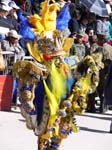 |
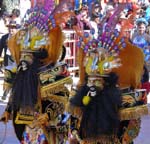 |
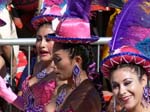 |
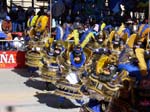 |
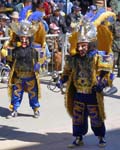 |
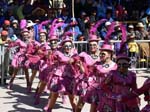 |
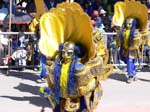 |
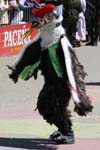 |
 |
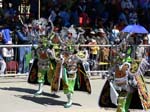 |
 |
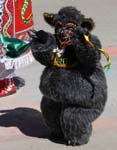 |
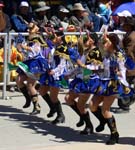 |
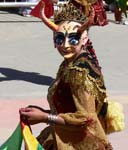 |
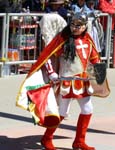 |
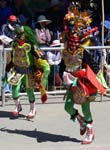 |